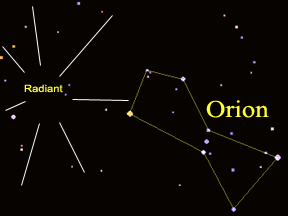A Solar System Model Builders Guide

Imagine you want to build a scale model of the solar system.
First, you need to decide on a scale for your model. Let's say we decide we'll use a marble that is 1 cm across to represent the Earth. Then how big would the Sun and the other planets be and where would they go?
To figure out the sizes of the planets and the Sun compared to our Earth marble, you need to multiply the 1 cm size of Earth by the relative sizes of the Sun and the planets. A marble for the Sun would have to be 109 cm across (bigger than a big beach ball), and a marble for Mercury would be about the size of your pencil's eraser.
Next, you need to figure out where to put your model planets. How far are they from the Sun? At this scale, Mercury would be 46 m (151 feet) from the Sun, Earth would be 118 m (387 feet) from the Sun, and Pluto would be more than 5.8 km (3.6 miles) from the Sun!
You might also be interested in:

Scientists believe that the solar system was formed when a cloud of gas and dust in space was disturbed, maybe by the expl osion of a nearby star (called a supernova). This explosion made waves in space
...more
The solar system is made up of the Sun, the // Call the planets count function defined in the document head print_planet_count('planets'); planets and // Call the planets count function defined in the
...more
Eris is a dwarf planet in our Solar System. Eris is a lot like Pluto, which is also a dwarf planet. Eris and Pluto are both very far from the Sun. They are both very, very cold. Eris was discovered in
...more
Do you know what a planet is? Guess what... astronomers are not quite sure what a planet is! Mercury, Venus, Earth, and Mars are the planets closest to the Sun. They are definitely all planets. They are
...more
Meteor showers are times when you can see a lot of meteors in one night. There are several different meteor showers. Each meteor shower happens at the same time every year. There is a meteor shower in
...more
The Leonid meteor shower is one of several major meteor showers that occur on roughly the same date each year. The Leonids typically "peak" (are at their greatest level of activity) in mid to late November.
...more
A meteor shower is an astronomical event during which many meteors can be seen in a short period of time. Most meteor showers have a peak activity period that lasts between several hours and a couple of
...more














